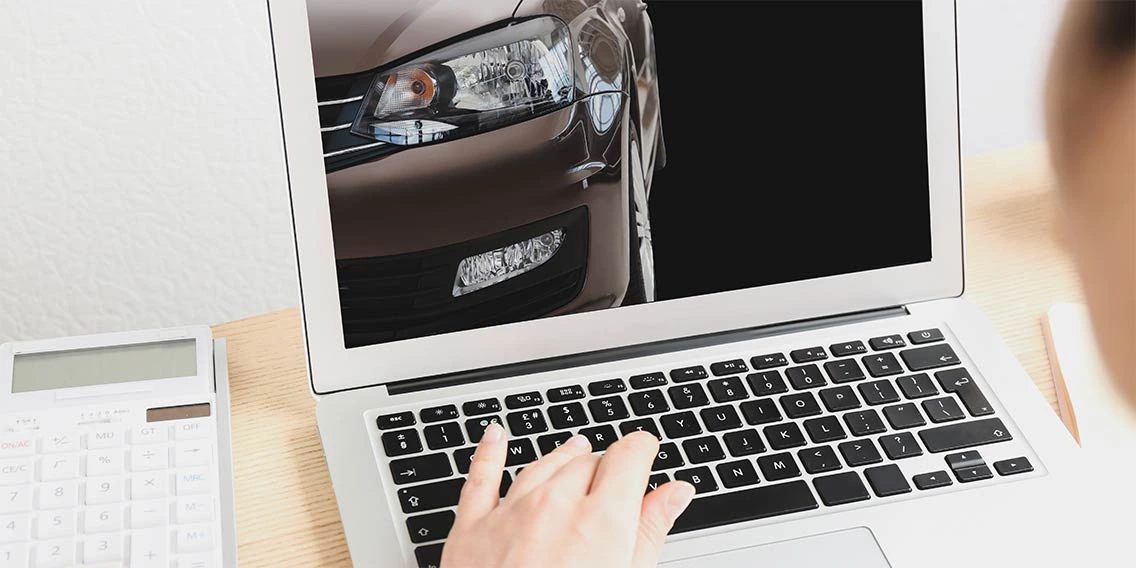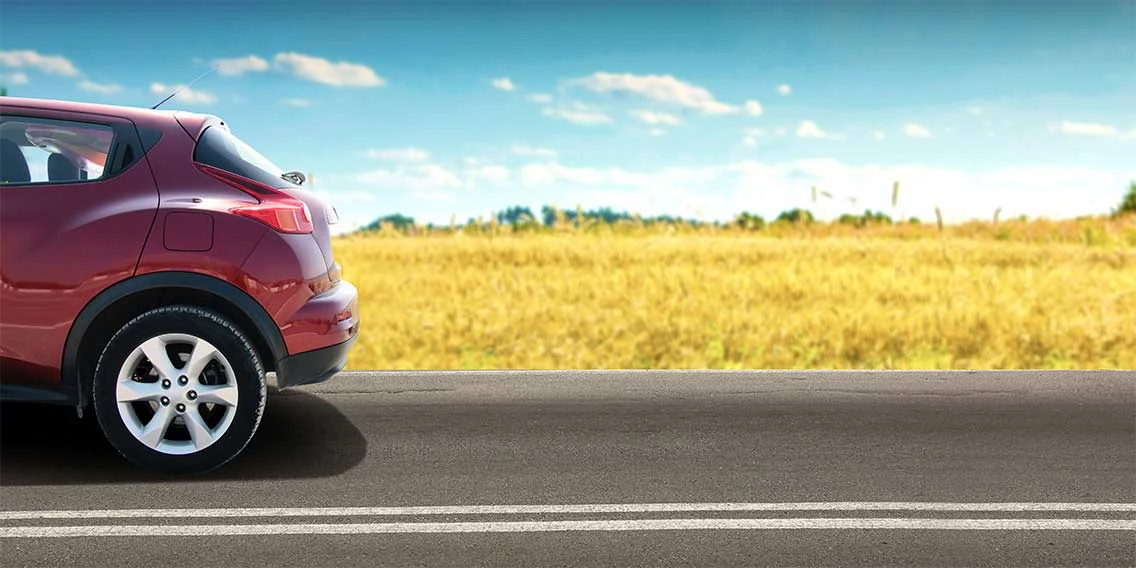AUTO
7 Steps to Selling Your Vehicle Privately
EXPECTED READ TIME: 12 MINUTES
When it comes to selling your vehicle, you can work with an auto dealer or go ahead and sell to a private party. Speed of sale, intended profit, and level of convenience will certainly factor into your decision.
Follow these seven steps to make the endeavor as smooth and profitable as possible.
1. Gather and Organize Your Paperwork
Selling a vehicle does require some upfront legwork, and that begins with gathering important paperwork. You'll need to start a file that contains:
Vehicle Title
You'll have to transfer your vehicle's title to the new owner upon completion of the sale. If you own the car or truck outright, it's as easy as signing the back of the title document. If you're still making payments, contact the lien holder (ie., your lender) to determine the exact payoff amount and the steps required to transfer the title.
History Report
It may cost you a few dollars, but it's a good idea to obtain a history report for your vehicle from Carfax or AutoCheck to share with potential buyers. The information contained in these reports should answer questions they might have about accidents, major repairs, or title issues.
Maintenance Records
Service records provide proof that you've taken good care of your car or truck, which should help you justify a higher asking price. Either way, the more details you can provide about any repairs, oil changes, filter replacements, tire rotations, and hose and belt inspections you've done on the vehicle, the better.
Warranty Documentation
Whether or not your vehicle's factory or extended warranty is still valid, it's a good idea to turn over all related paperwork to the buyer. Be sure to include any warranty documentation that applies to replacement parts such as the battery, tires, starter, alternator, or other mechanical and electrical components.
Bill of Sale
Many states require a bill of sale to complete a transaction involving a motor vehicle. The bill of sale records the transaction and can be used as proof of purchase, much like a receipt. It also outlines the terms and conditions of the sale, in writing, and protects you against any later complaints or disputes.
Even if your state doesn't mandate a bill of sale, you'd be wise to create one when selling your car or truck. A bill of sale for an automobile should include:
- Year, make, and model
- Vehicle identification number (VIN)
- Date of transaction (sale date)
- Sale price
- Names, addresses, and signatures of both the buyer and the seller
2. Set a Price for Your Car
Before you can set a competitive price for your vehicle, you need to know how much it's worth. The best place to start is Kelley Blue Book or Edmunds.
KBB and Edmunds are third-party resources used extensively by car buyers and sellers to check pricing, ratings, and value information for automobiles. When selling, you can reference these sites to help estimate the value of your vehicle based on such criteria as:
- Year
- Make
- Model
- Body style
- Condition level
- Mileage
- ZIP code where it's being sold
You should also search online and local classified ads to compare prices in your area for similar vehicles. Autotrader and Cars.com are both helpful sites.
After completing your research, you'll need to set an asking price. A good rule of thumb is to start with an amount roughly in the middle of the range of prices for similar vehicles, and then add or subtract based on your automobile's condition.
For example, if your vehicle has below-market mileage, you could increase the asking price, and vice versa if it has more miles than other cars or trucks. Meanwhile, if your car needs new tires or mechanical work, you'll probably need to lower your price.
Either way, remember to build in a little room for negotiation when setting your price. Most buyers will offer you less than you're asking, regardless of what amount you post.
3. Clean Your Vehicle
Much like curb appeal with a home, the way your car or truck looks can have a profound impact on a potential buyer. That's why one of the best (and cheapest) things you can do when preparing to sell your vehicle is to clean it, inside and out. Here's how to clean your vehicle to get the highest price:
- Wash and wax the exterior
- Scrub the tires and shine the rims
- Remove dirt, oils, leaves, and other debris from under the hood
- Vacuum the interior thoroughly
- Shampoo carpets and seats (if needed)
- Wash the windows
- Empty and vacuum the trunk
- Disinfect high-touch surfaces (steering wheel, gear shift knob, temperature and radio controls, door handles, etc.)
4. Fix Any Issues
Even if you're selling your vehicle as-is, you should repair — or at least acknowledge — any mechanical or cosmetic issues, particularly if they're inexpensive. Replacing burnt out lights and fuses, changing the oil and filters, and topping off all fluids are easy fixes that require very little time or money to perform.
If you can't or don't want to address larger problems, be prepared to discuss them with prospective buyers. Keep in mind that you'll likely have to lower your price if these issues aren't corrected.
5. Advertise Your Vehicle
Once your vehicle is clean and pristine, it's time to officially put it on the market. These days, that means advertising online rather than simply parking your ride beside the road with a "For Sale" sign in the windshield.
To create an effective online advertisement for your vehicle, you need to:
Show (Lots Of) Photos
Use a smartphone or digital camera to take a wide range of pictures, in a well-lit area, from a variety of angles. Be sure to include:
- Exterior shots, including front and rear photos from both sides
- Interior images that highlight the dashboard, front and rear seats, and carpeting
- Photos of the engine, tires, trunk, and odometer
Try to showcase features that differentiate your car or truck from others, including such upgrades as alloy wheels, a sunroof, performance components, and a high-end stereo.
And don't be afraid to show scratches, dents, and dings. Shoppers realize imperfections are part and parcel of buying a used car.
Write an Engaging Advertisement
Although pictures will tell a great deal of your vehicle's story, you should spend some time crafting a complementary — and compelling — written advertisement. List the basics first, including:
- Price
- Year
- Make, model, and trim level
- Transmission type (manual or automatic)
- Mileage
- Color
- Condition
- Popular options and add-ons
Next, write a description that helps potential buyers connect emotionally with your car or truck. Talk about the years of enjoyment you had driving it and explain why you're selling it. If applicable, good features to highlight include:
- Single owner
- Meticulously maintained, per manufacturer's recommendations
- New parts recently installed (tires, belts and hoses, battery, etc.)
- Garage-kept
- Driven primarily on highways
- Low cost of ownership
- Spotless interior
Simply put, try to make your ad stand out by giving it a more personal feel. And, by all means, provide contact information (mobile number, email address) and a preferred method of communication.
Post Your Listing in Multiple Places
The highest-resolution images and most well-written description will do little to sell your vehicle if they aren't posted where potential buyers are looking. Here are some of best places to advertise your car or truck:
- Paid online classifieds such as AutoTrader, Cars.com, and CarGurus
- Free online classifieds, including Craigslist, Facebook Marketplace, and eBay
- Online marketplaces like Carvana and Vroom
- Message boards and online car forums
- Social media sites like Facebook and Twitter (ask friends and contacts to help you spread the word)
Regardless of where you place your ad online, make it easy for potential buyers to contact you. Some people won't leave a message for a return call, so try to answer the phone or respond quickly to a text. Good first impressions go a long way, even when it comes to selling a car.
6. Meet Buyers and Show Your Vehicle
Before meeting with a potential buyer, you'll probably trade a few texts and have one or more phone conversations. Use this opportunity to not only answer questions openly and honestly, but to evaluate the person. If he or she seems pushy, difficult, or suspicious, wait for another buyer.
Once you've communicated with a prospective buyer and agreed to move forward, decide on a place and time to meet. It's perfectly fine — if not preferred — to show your vehicle at a shopping center, park, or other public area rather than your house. You should also try to schedule a time during daylight hours throughout the work week or on Saturday. It's a good safety measure, but seeing the car in daylight also allows the buyer to get a clearer sense of the vehicle's condition and features.
When you meet, the potential buyer will want to take a test drive. Check to ensure the person has a license before letting anyone slide behind the wheel and be prepared to ride along so you can answer questions about the vehicle's history and performance. If he or she asks to have the car inspected by a third party — and many people do — offer to accompany them or suggest that you take it for them to the mechanic of their choice at a later date.
7. Negotiate and Finalize the Deal
If all goes well with the test drive and inspection, the prospective buyer will likely make you an offer. Expect it to be less than your asking price. If you get a low offer for your car, you have a few options:
- Accept the offer and move forward with the purchase.
- Negotiate until you reach a number that works for you and the buyer.
- Decline the offer and start the process over with another buyer(s).
Assuming you're able to settle on a price, you'll need to arrange payment and finalize the sale. Cash is king, but if that isn't possible, request a bank transfer or certified check. Don't accept a personal check as payment unless you can verify with the buyer's bank that they have sufficient funds to cover the purchase price.
After you have money in hand, you'll need to transfer the title to the new owner, complete the bill of sale, and hand over the keys. Make copies of the signed title and bill of sale, and then inform your state's department of motor vehicles that you sold your car. When you're finished, remember to cancel your auto insurance or transfer it to another vehicle.
What Are the Pros and Cons of Selling Your Vehicle Privately?
You'll make more money selling your car or truck to an individual than to a dealer, or even using it as a down payment for another vehicle. It's also the easiest — if not the only — way to receive a decent offer if you're trying to get rid of a high-mileage automobile.
There are, of course, trade-offs for the enhanced profitability that comes with selling your vehicle privately.
For starters, doing it yourself requires substantial upfront legwork and generally takes days or weeks to complete a sale. Plus, you're responsible for all the paperwork and negotiating, as well as adjusting your schedule to show the vehicle to potential buyers.
| Pros | Cons |
|---|---|
| More profit from the sale | Considerable upfront legwork |
| Easier to sell high-mileage vehicles | Takes longer to sell |
| More control over the process | You handle all the paperwork |
Scams to Watch Out for When Selling a Car
Expect the best, plan for the worst. When attempting to sell your vehicle, beware of these common car-buying hustles:
Sight-Unseen Purchase
If someone makes an offer on your vehicle without seeing it, you should probably decline. Serious buyers will want to look at your car, ask questions, and take it for a spin. Sight-unseen offers are often part of a larger scheme to pass a bad check or obtain the vehicle's title without paying for it.
Distant Buyer
Potential buyers who live a few states away — or farther — aren't necessarily fraudsters. However, unless you're selling a vintage vehicle or a hard-to-find model, you should exercise caution when dealing with prospective purchasers located some distance from you, especially if they want you to use a shipping service to send your car to them.
Fake Cashier's Check or Money Order
It's often difficult to tell the difference between a real check and a fake one, even for people who are trained to look for them. With a certified check scam, the check looks real, and the bank will typically cash it. Unfortunately, it then bounces several days later, and you're stuck with no money and no vehicle. You can try to avoid this situation by looking up the number for the check's issuing bank online and contacting them to verify if the check you have in hand is legitimate.
Escrow Account
Using an escrow account to hold the title to your car until you secure payment sometimes makes sense if you use a reputable credit union, bank, attorney or online service of your choosing. By and large, you should not agree to an "escrow service" that the prospective buyer recommends.
Overpayment Scam
Aside from fraudulent checks, overpayment scams are the biggest swindles you might encounter. In an overpayment scam, the potential buyer might tell you that someone else owes them an amount of money that's higher than your selling price. They will then ask for your vehicle and promise that the other individual will pay for it.
Another overpayment scam involves the promise to wire additional funds or write a larger check to cover shipping costs. The buyer will send a fraudulent check and ask you to deposit it. If you ship the vehicle before the check clears, you may never be able to collect the money — or your vehicle.
The Bottom Line
If you prepare for and commit to the process, the payout for a sale by owner may very well be worth your planning, patience, and energy.
Learn More About Car Ownership Options Through PenFed
Explore the diverse offering of products, services, and support available to our members.




